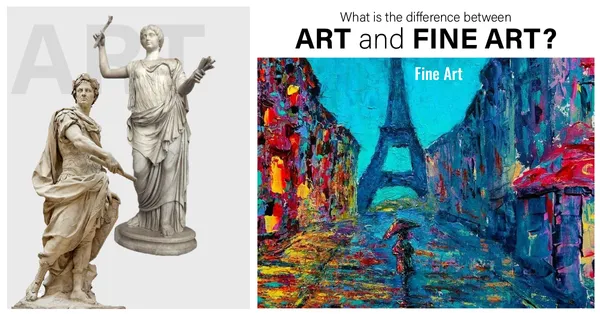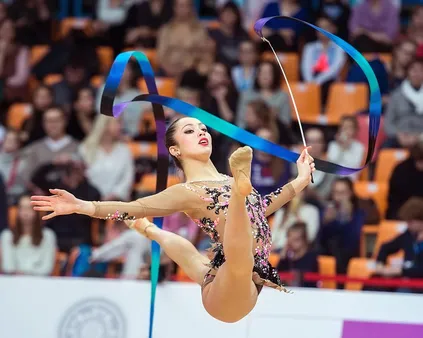Table of Contents
Welcome to Kizworld, where we explore the fascinating realm of art and aesthetics. In this article, we delve into the intriguing question: what's The difference between artistic and aesthetic? While these terms are often used synonymously, there lies a subtle distinction that invites contemplation. Join us as we uncover the nuances that separate the artistic from the aesthetic, examining the role of intention, context, subjectivity, and the captivating relationship between art and beauty.
The Difference Between Artistic and Conventional Writing
I. Artistic vs. Aesthetic
Artistic vs. Aesthetic
The Role of Intention in Art
The difference between artistic and aesthetic is a matter of debate. Some people believe that the two terms are synonymous, while others believe that there is a clear distinction between them. In this article, we will explore the difference between artistic and aesthetic, and we will discuss the role of intention, context, and subjectivity in art. We will also examine the relationship between art and beauty, and we will consider the value of art.
One of the key differences between artistic and aesthetic is the role of intention. Artistic works are created with the intention of expressing beauty or emotion, while aesthetic works are created with the intention of pleasing the senses. This distinction is important because it helps us to understand the different purposes of art. Artistic works are meant to be appreciated for their beauty or emotional impact, while aesthetic works are meant to be enjoyed for their sensory appeal.
- Artistic works are created with the intention of expressing beauty or emotion.
- Aesthetic works are created with the intention of pleasing the senses.
Another key difference between artistic and aesthetic is the role of context. Artistic works are often created in a specific context, such as a museum or gallery. This context helps to shape the meaning of the work and the way that it is experienced by viewers. Aesthetic works, on the other hand, are often created without a specific context in mind. They can be enjoyed in any setting, and their meaning is not dependent on the context in which they are experienced.
Artistic | Aesthetic |
Created with the intention of expressing beauty or emotion | Created with the intention of pleasing the senses |
Often created in a specific context | Often created without a specific context in mind |
Meaning is shaped by the context in which it is experienced | Meaning is not dependent on the context in which it is experienced |
The Importance of Context in Art
The context in which a work of art is created and experienced can have a significant impact on its meaning. For example, a painting that is displayed in a museum may be interpreted differently than the same painting that is displayed in a living room. The museum context suggests that the painting is a work of art that is worthy of serious consideration, while the living room context suggests that the painting is a decorative object that is meant to be enjoyed for its aesthetic appeal.
The context of a work of art can also influence the way that it is interpreted by different viewers. For example, a painting that is created by a famous artist may be interpreted differently than the same painting that is created by an unknown artist. The famous artist's reputation may lead viewers to believe that the painting is a work of art that is worthy of serious consideration, while the unknown artist's reputation may lead viewers to believe that the painting is a decorative object that is meant to be enjoyed for its aesthetic appeal.
The Subjective Nature of Art
Art is a subjective experience. What one person finds beautiful, another person may find ugly. What one person finds meaningful, another person may find meaningless. This is because art is not a matter of objective fact. It is a matter of personal opinion.
The subjective nature of art means that there is no one right way to interpret a work of art. Each viewer brings their own unique experiences and perspectives to the work, and they will interpret it in their own way. This is what makes art so powerful and meaningful. It allows us to connect with others on a deep level, even if we do not share the same beliefs or values.
- Art is a subjective experience.
- What one person finds beautiful, another person may find ugly.
- What one person finds meaningful, another person may find meaningless.
The Relationship Between Art and Beauty
The relationship between art and beauty is a complex one. Some people believe that art is always beautiful, while others believe that art can be ugly. There is no easy answer to this question, as it depends on the individual viewer's definition of beauty.
However, there are some general trends that can be observed. For example, many people find art that is symmetrical or harmonious to be beautiful. They also find art that is realistic or lifelike to be beautiful. Additionally, many people find art that expresses strong emotions to be beautiful.
Of course, there are also many people who find art that is asymmetrical or disharmonious to be beautiful. They also find art that is abstract or non-representational to be beautiful. Additionally, many people find art that expresses negative emotions to be beautiful.
Ultimately, the relationship between art and beauty is a personal one. What one person finds beautiful, another person may find ugly. This is what makes art so powerful and meaningful. It allows us to connect with others on a deep level, even if we do not share the same beliefs or values.
The Value of Art
Art has many different values. It can be used to express beauty, emotion, and ideas. It can also be used to educate, entertain, and inspire. Additionally, art can be used to bring people together and create a sense of community.
The value of art is not always easy to measure. However, there is no doubt that art can have a positive impact on our lives. It can make us happier, healthier, and more productive. It can also help us to understand ourselves and the world around us better.
For these reasons, art is a valuable part of our culture. It is something that we should all cherish and support.
II. Artistic Skill vs. Aesthetic Appeal
Artistic Skill vs. Aesthetic Appeal
Elements of Artistic Skill and Aesthetic Appeal
- Artistic Skill is the ability to create art that is pleasing to the eye, exhibiting technical proficiency and creative expression.
- Aesthetic Appeal is the quality of something that makes it attractive or beautiful, triggering emotional responses and subjective experiences.
The Role of Intention in Art
- Artistic Intention refers to the artist's deliberate choices, purpose, and meaning behind the creation of an artwork, shaping its message and significance.
- Aesthetic Appreciation is the subjective evaluation and enjoyment of an artwork's beauty, harmony, and emotional impact, often influenced by personal taste and cultural context.
Related: The Importance of Gymnastics in School
The Importance of Context in Art
Factor | Influence on Art |
|---|---|
Historical Context | Affects the artistic styles, themes, and techniques prevalent during a specific era. |
Cultural Context | Shapes the artistic expressions, symbols, and meanings embedded within an artwork. |
Social Context | Impacts the artist's perspective, subject matter, and engagement with contemporary issues. |
The Subjective Nature of Art
Characteristic | Effect on Art Appreciation |
|---|---|
Personal Taste | Influences an individual's preferences for certain artistic styles, genres, and subjects. |
Cultural Background | Affects the interpretation and understanding of symbols, motifs, and cultural references in art. |
Emotional Response | Subjective feelings evoked by an artwork, ranging from joy and inspiration to sadness and contemplation. |
Related: Easy Gymnastics Moves for Beginners
Conclusion
In conclusion, artistic skill and aesthetic appeal are distinct yet interconnected aspects of art. Artistic skill encompasses the technical ise and creative expression required to produce visually pleasing art, while aesthetic appeal relates to the subjective experience of beauty and emotional resonance it evokes. The intention of the artist, the context in which the art is created, and the subjective nature of art appreciation all contribute to the complex interplay between artistic skill and aesthetic appeal.
III. Different Applications of Artistic and Aesthetic
Different Applications of Artistic and Aesthetic
Fine Arts vs Applied Arts
Fine arts are created primarily for their aesthetic value, while applied arts are created with a practical purpose in mind. Examples of fine arts include painting, sculpture, and music, while examples of applied arts include architecture, graphic design, and fashion design. Many different art forms can be classified as either fine arts or applied arts, depending on the intention of the artist and the purpose of the work.
The distinction between fine arts and applied arts is not always clear-cut. Many works of art can be considered to be both fine and applied art. For example, a painting can be created primarily for its aesthetic value, but it can also be used to illustrate a story or teach a lesson. Conversely, a piece of applied art, such as a building, can be very beautiful and may even be considered a work of art in its own right.
Fine Arts | Applied Arts |
|---|---|
Painting | Architecture |
Sculpture | Graphic design |
Music | Fashion design |
The Difference Between Artistic and Aesthetic
Artistic and Aesthetic Preferences
Everyone has different artistic and aesthetic preferences. Some people prefer realistic art, while others prefer abstract art. Some people prefer bright colors, while others prefer muted tones. There is no right or wrong answer when it comes to artistic and aesthetic preferences. It is simply a matter of personal taste.
Our artistic and aesthetic preferences can be influenced by a number of factors, such as our culture, our upbringing, and our personal experiences. For example, someone who grew up in a culture that values realism in art may be more likely to prefer realistic paintings over abstract paintings. Similarly, someone who had a traumatic experience in childhood may be more likely to prefer art that is dark and brooding.
Artistic and Aesthetic Value
The artistic and aesthetic value of a work of art is often subjective. What one person considers to be a beautiful and valuable work of art, another person may consider to be ugly and worthless. There is no objective standard of artistic or aesthetic value. However, there are a number of factors that can contribute to the perceived value of a work of art, including its technical skill, its originality, and its emotional impact.
- Technical skill: The level of technical skill that goes into a work of art can be a significant factor in determining its value. A painting that is executed with great skill and precision is often considered to be more valuable than a painting that is sloppily executed.
- Originality: The originality of a work of art can also contribute to its value. A work of art that is truly original and unique is often more valuable than a work of art that is derivative or imitative.
- Emotional impact: The emotional impact of a work of art can be a powerful factor in determining its value. A work of art that touches our emotions and makes us feel something is often considered to be more valuable than a work of art that leaves us feeling indifferent.
The Most Famous Gymnasts of All Time
IV. Importance of Artistic and Aesthetic Appreciation
Importance of Artistic and Aesthetic Appreciation
- Enhances critical thinking and problem-solving skills.
- Fosters creativity and imagination.
- Understanding the Difference between Art and Aesthetics
- Promotes emotional intelligence and empathy.
Enhances self-expression and communication skills.
Contributes to a more fulfilling and meaningful life.
Artistic Appreciation | Aesthetic Appreciation | |
|---|---|---|
Definition: | The ability to understand, interpret, and enjoy art. | The ability to appreciate beauty and harmony in art. |
Focus: | Meaningful Expression: | Sensory Experience: |
Source: | Intellect and Emotion: | Senses: |
Purpose: | Enriching Personal Experience: | Finding Pleasure and Beauty: |
Artistic appreciation requires critical thinking to understand the artist's intent and emotional intelligence to connect with the work on a deeper level.
Aesthetic appreciation, on the other hand, focuses primarily on the sensory experience provided by the beauty and harmony of the art.
V. Conclusion
The difference between artistic and aesthetic is a matter of debate. Some people believe that the two terms are synonymous, while others believe that there is a clear distinction between them. Ultimately, the meaning of "artistic" and "aesthetic" is subjective and depends on the individual's perspective. However, by understanding the different factors that contribute to the artistic and aesthetic value of an object, we can better appreciate and understand the role that art plays in our lives.